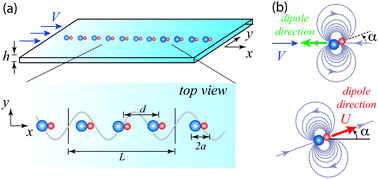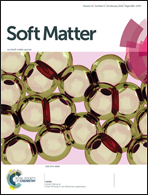Activity-induced instability of phonons in 1D microfluidic crystals†
Abstract
One-dimensional crystals of passively-driven particles in microfluidic channels exhibit collective vibrational modes reminiscent of acoustic ‘phonons’. These phonons are induced by the long-range hydrodynamic interactions among the particles and are neutrally stable at the linear level. Here, we analyze the effect of particle activity – self-propulsion – on the emergence and stability of these phonons. We show that the direction of wave propagation in active crystals is sensitive to the intensity of the background flow. We also show that activity couples, at the linear level, transverse waves to the particles' rotational motion, inducing a new mode of instability that persists in the limit of large background flow, or, equivalently, vanishingly small activity. We then report a new phenomenon of phonons switching back and forth between two adjacent crystals in both passively-driven and active systems, similar in nature to the wave switching observed in quantum mechanics, optical communication, and density stratified fluids. These findings could have implications for the design of commercial microfluidic systems and the self-assembly of passive and active micro-particles into one-dimensional structures.



 Please wait while we load your content...
Please wait while we load your content...